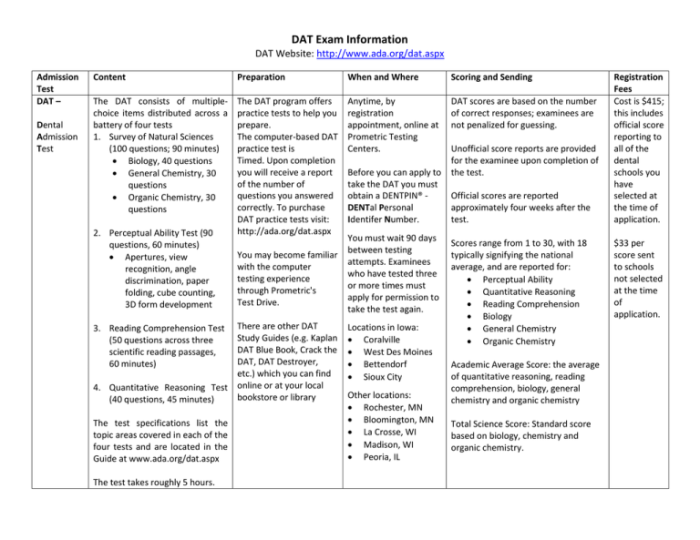As DAT Foundations 1 Final Exam looms on the horizon, we delve into the captivating world of data, its intricacies, and its profound impact on our digital landscape. From the fundamental concepts of data to the ethical implications of its usage, this comprehensive guide will equip you with the knowledge and insights to conquer this exam and unlock the secrets of data.
Throughout this discourse, we will explore the principles of data modeling and normalization, unravel the complexities of data management systems, and uncover the techniques employed in data analysis. We will also delve into the crucial realm of data ethics, emphasizing the importance of privacy and informed consent.
Data Foundations: Dat Foundations 1 Final Exam

Data, the lifeblood of modern technology, forms the cornerstone of decision-making and scientific discovery. It encompasses a vast array of types, structures, and representations, necessitating a comprehensive understanding of its fundamental concepts.
Types of Data
Data exists in various forms, each with unique characteristics. Numerical data, as its name suggests, consists of numbers and can be discrete (integer values) or continuous (decimal values). Categorical data, on the other hand, represents non-numerical attributes and can be nominal (without inherent order) or ordinal (with an inherent order).
Data Structures
Data can be organized into different structures to facilitate efficient storage and retrieval. Arrays, for instance, store data elements in a contiguous memory block, allowing for direct access based on index. Linked lists, on the other hand, connect data elements through pointers, providing flexibility for insertions and deletions.
Data Representations
Data can be represented in various formats, each tailored to specific applications. Binary representation, commonly used in computers, employs a sequence of 0s and 1s to represent data. Text representation, suitable for human consumption, utilizes characters to encode data. Images and videos, representing visual and auditory information, are stored in specialized formats.
Data Modeling
Data modeling is the process of representing data in a structured manner, making it easier to understand and manage. Relational data models, such as those used in SQL databases, organize data into tables with rows and columns, establishing relationships between different tables.
Data Normalization, Dat foundations 1 final exam
Data normalization is a technique for organizing data in a manner that reduces redundancy and improves data integrity. It involves decomposing data into smaller, more manageable tables, ensuring that each data element is stored only once.
Data Models
Different data models are used for different purposes. Relational data models are widely used for structured data, while hierarchical data models are suitable for data with a tree-like structure. Network data models, on the other hand, are designed for data with complex relationships.
Data Management

Data management encompasses the processes involved in acquiring, storing, and retrieving data to meet business needs and ensure data integrity. It involves a range of activities, from data collection and preparation to data analysis and reporting.
Data Acquisition
Data acquisition involves collecting data from various sources, such as surveys, sensors, and databases. It requires careful planning to ensure the data collected is relevant, accurate, and complete.
Data Storage
Once data is acquired, it needs to be stored in a secure and accessible manner. Data storage systems, such as databases and data warehouses, organize and manage data to facilitate efficient retrieval and analysis.
Dat Foundations 1 final exam was a breeze! I’m feeling confident about my performance, especially after learning that julio is paid 1.4 times as much as his colleague. That just goes to show how much I’ve grasped the concepts of the course.
Now, I can’t wait to see my final grade!
Data Retrieval
Data retrieval involves accessing and extracting data from storage systems based on specific criteria. It is essential for data analysis, reporting, and decision-making.
Data Management Systems
Data management systems (DBMS) are software applications that provide a centralized platform for managing and accessing data. They offer features such as data organization, query processing, and security controls. Data warehouses are specialized DBMSs designed for storing and analyzing large volumes of data for business intelligence and decision support.
Data Security and Privacy
Data security and privacy are critical aspects of data management. Security measures protect data from unauthorized access, modification, or destruction. Privacy measures ensure that personal or sensitive data is handled ethically and in compliance with regulations.
Data Analysis

Data analysis involves examining, cleaning, transforming, and modeling data with the goal of extracting meaningful insights. It plays a crucial role in various fields, enabling businesses, organizations, and researchers to make informed decisions.
Techniques for Data Analysis
Data analysis techniques can be broadly categorized into three types:
- Descriptive Statistics:Summarizes data using measures such as mean, median, mode, range, and standard deviation to provide an overview of the data’s central tendencies and variability.
- Inferential Statistics:Uses sample data to make inferences about a larger population, allowing researchers to test hypotheses and draw conclusions beyond the data at hand.
- Data Mining:Explores large datasets to identify hidden patterns, correlations, and trends, often using machine learning algorithms and techniques.
Role of Data Visualization
Data visualization plays a vital role in data analysis by presenting data in a graphical format, making it easier to understand and interpret complex relationships. Common visualization techniques include charts, graphs, maps, and dashboards, which help analysts identify patterns, trends, and outliers in the data.
Applications of Data Analysis
Data analysis has numerous real-world applications, including:
- Predictive Modeling:Using historical data to build models that predict future outcomes, such as customer churn or sales trends.
- Market Research:Analyzing consumer data to understand their preferences, behaviors, and demographics.
- Fraud Detection:Identifying suspicious transactions or patterns that may indicate fraudulent activity.
Data Ethics

Data ethics involves the moral and ethical considerations surrounding the collection, storage, and use of data. It ensures the responsible and ethical treatment of data to protect individuals’ rights and privacy.
Importance of Data Privacy and Informed Consent
Data privacy is crucial as it safeguards individuals’ personal information from unauthorized access, misuse, or disclosure. Informed consent requires individuals to be fully aware of how their data will be collected, used, and shared before giving their permission.
Examples of Data Ethics Violations and Consequences
Data ethics violations can have severe consequences:
-
-*Cambridge Analytica Scandal
Misuse of Facebook user data for political manipulation.
-*Uber Data Breach
Unauthorized access to millions of user accounts, compromising personal information.
-*Equifax Data Breach
Exposure of sensitive financial data due to a security breach.
FAQ Corner
What is the scope of the DAT Foundations 1 Final Exam?
The exam covers the fundamental concepts of data, data management, data analysis, and data ethics as Artikeld in the course curriculum.
What types of questions can I expect on the exam?
The exam will consist of a mix of multiple-choice, short answer, and essay questions designed to assess your understanding of the course material.
How can I prepare effectively for the exam?
Thoroughly review the course material, attend all lectures and tutorials, and complete all assignments. Additionally, practice answering exam-style questions to enhance your confidence.